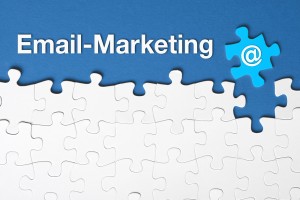8 E-mails Your Business Should Send
Image: flickr.com/Micky Alridge under Creative Commons
In today’s electronic world, e-mail marketing has become an important tool in growingyour business. It is a fact that there is a deluge of e-mail traffic around the world. However, e-mails properly written and sent with a according to a plan will go a long way in getting your brand personalized attention. While e-mail deluge acts against business interests, here are 8 e-mails your business should send. These will help your business gain traction in getting into your target market’s mindspace.
Some key factors to keep in mind:
1. Personalize the copy – by using their names or other personal information. This will show your reader that you took some time to craft an e-mail that is meant specifically for her.
2. Segment your list – remember there is no one-size-fits-all customer. You must slice and dice your e-mail list into appropriate segments so that you can tailor your message to each segment to get the most advantage. If you are not sure about your segmentation you can always fall upon the RFM principle – Recency (when did the customer last buy from you), Frequency (how often) and Monetary value (how much)
3. Make your call-to-action pop up – whatever action you desire from you customer must be compelling enough for the prospect to take action
4. Make your e-mails visually appealing
Remember the main objectives of your e-mail campaigns are to establish a relationship, build rapport and educate your reader about your business. You can only succeed if you are consistent in your e-mailing efforts.
Here are some e-mails that will help you in getting to your objectives.
1. Welcome e-mail: Roll out the red carpet for your new customer. Whether they come in online or through your brick and mortar store front, show them that you consider them as very important. Send them an e-mail welcoming them into your “family”, know what they can expect from your business and how you will resolve their dissatisfaction, if any.
For those who sign up for any of your electronic marketing pieces, the welcome e-mail can also be used to set expectations in terms of frequency and what you will be sharing with them going forward.
Timeliness is very critical for welcome e-mails. You have to ensure you send this out as soon as your customer in on-boarded.
2. Thank you e-mail: These are very useful in both online and off-line situations. Off line, always send your customer an e-mail thanking them for giving you the opportunity to service their need. Let them know you are proud of what you did for them and ask if they are equally proud about the product / service they received. Elicit their feedback through such e-mails and ask for a testimonial that you can use.
In case of online signup, your thank you e-mails can also contain any retrieval information that the customer can use in the future to retrieve their earlier information / transaction.
3. Newsletters: A newsletter or blog is a great way of communicating with your customer base. It is critical that you design these e-mails in a visually appealing way so that it gets people to read them. It is always good to have an image paired with a headline, a brief summary and a call to action to get your readers to read more. This format will give you the ability to feature multiple articles without sending a great lengthy e-mail.
4. Information / educational e-mail: These can be very tricky as people generally don’t want to receive them. So your greatest focus should be on simplifying this e-mail and not over designing it. Keep the selling part to the bare minimum and ensure the e-mail is all about information / education. Rather than inundate your customer with multiple e-mails about various products, consider sending them a roundup of new updates or products. Be brief and link each product to a specific web page to allow those who want more information to go there.
5. Promotional e-mail: While you should refrain from over selling your products /  services via e-mail campaigns, promotional e-mails are good to bring attention to your business regularly. Remember most people generally don’t want these e-mails. They want to know “What’s in it for me”. But if you send these to your customer base with a clear offer that is front and centre, they cannot neglect it. Give the customers a reason to act, create a sense of urgency instead of letting the e-mail sit in their inbox. Use active language and keep it short.
services via e-mail campaigns, promotional e-mails are good to bring attention to your business regularly. Remember most people generally don’t want these e-mails. They want to know “What’s in it for me”. But if you send these to your customer base with a clear offer that is front and centre, they cannot neglect it. Give the customers a reason to act, create a sense of urgency instead of letting the e-mail sit in their inbox. Use active language and keep it short.
6. Re-order e-mails: If your business sells products or services that are needed on a regular basis, re-order e-mails are an integral part of your arsenal. The purpose of these e-mails would be to encourage your customers to replenish your product or renew the subscription to your service. To enable them to do so, create a very simple and easy-to-find button that clearly states “Reorder Now”.
7. Testimonial e-mail: Testimonials are a great way of reinforcing to prospects how good your business is. There can be no better promotion of your business than an existing customer who speaks highly of you. It will take time to collect these e-mails but you have to be persistent with your customer base to give you testimonials.
8. Survey e-mails: These e-mails help you collect information that you can use to improve your customer service. However, in order for your readers to respond and take the survey you have to give them a reason. Explain clearly why you want the information. Provide them with some incentive to complete the survey. To get the best response, ask the right questions and keep it short.
 I hope this list gives you the right ammunition to take your e-mail marketing to greater heights. As always, you can depend on us to bring you the right advice to manage your small or medium business.
I hope this list gives you the right ammunition to take your e-mail marketing to greater heights. As always, you can depend on us to bring you the right advice to manage your small or medium business.
[This blog has been curated from web posts made by Lisa Furgison, Chris Hexton and Anum Hussain]
[/mp_span] [/mp_row]

